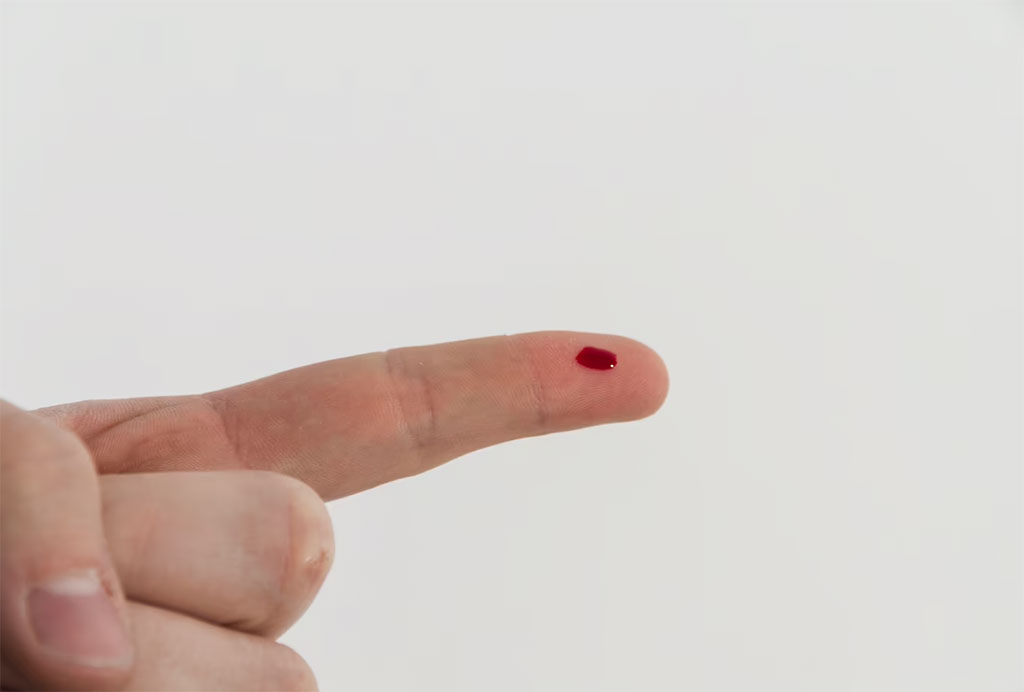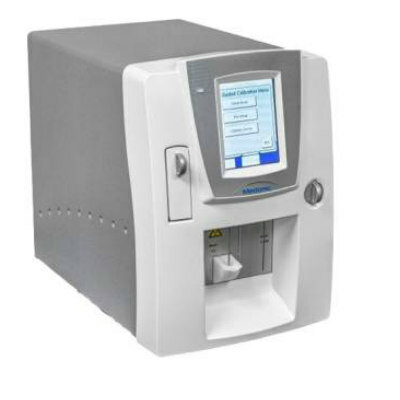Simple, Finger Prick Blood Test Shows Promise in Ability to Detect Alzheimer's
Posted on 21 Jul 2023
Technological advancements and breakthroughs in methodologies presented for the first time at the Alzheimer's Association International Conference (AAIC) 2023 demonstrate the ease, transportability, and diagnostic value of blood-based markers for Alzheimer's, hinting at the future possibility of self-administered tests by patients or their relatives. Blood tests are already being undertaken in Alzheimer's drug experiments to further validate their efficacy and to screen prospective participants, marking a significant shift from the currently prevalent expensive and invasive methods. In some scenarios, the data derived from these blood tests are comparable to established diagnostic tests like brain imaging and cerebrospinal fluid analysis.
In a recent study, researchers at The University of Gothenburg (Gothenburg, Sweden) aimed to streamline and broaden the availability of blood tests by creating a finger prick blood collection method for measuring crucial Alzheimer's biomarkers such as neurofilament light (NfL), glial fibrillary acidic protein (GFAP), and phosphorylated tau (p-tau181 and 217). They collected blood from 77 memory clinic patients in Spain via both vein and finger prick methods, placed the samples on dry blood spot cards, and shipped them overnight to the University of Gothenburg without any temperature regulation or cooling. The dried blood samples were then removed from the cards, and the levels of NfL, GFAP, and p-tau181 and 217 were assessed. The finger prick samples showed detectability for all these markers. The levels of GFAP, NfL, p-tau217, and p-tau181 in the vein blood samples strongly correlated with traditional blood analysis results. Similarly, GFAP, NfL, and p-tau217 obtained from finger prick blood showed a high correlation with regular blood collection.

"Our pilot study demonstrates the potential of remote collection and measurement of Alzheimer's biomarkers without low-temperature storage or extraordinary preparation or processing," said Hanna Huber, Ph.D., of the Department of Psychiatry and Neurochemistry, Institute of Neuroscience and Physiology, University of Gothenburg. "Currently, use of Alzheimer's blood tests is limited by the need to visit a clinic, administration by trained personnel, and strict time-limited and temperature-dependent delivery and storage procedures. A method that allows blood collection at home and that is simple enough to be performed independently, or by caregivers, would increase accessibility of these tests. It would result in improved early diagnosis and better monitoring of patients considered 'at risk' or those who are receiving approved therapies."
In a separate study, researchers at Lund University (Lund, Sweden) investigated the application of blood-based Alzheimer's biomarkers in primary healthcare, comparing them to the diagnostic precision of primary care physicians (PCPs). The BioFINDER-Primary Care study enlisted 307 patients aged between middle to old age at 17 primary care centers in Sweden. Following an office visit, cognitive evaluation, and a CT or MRI brain scan, the PCPs registered their diagnoses, likely biological causes, and proposed a treatment strategy for each patient. Simultaneously, a blood sample was obtained and analyzed for beta-amyloid and phosphorylated tau concentrations using the PrecivityAD2 test by C2N Diagnostics. The results of these two markers were combined into a score called the Amyloid Probability Score 2 (APS2). All the patients subsequently underwent a comprehensive clinical assessment at a specialized memory clinic, which included an evaluation by a specialist blinded to the blood sample results.
The PCPs accurately detected the presence of Alzheimer's-related changes or diagnosed Alzheimer's in about 55% of the cases, whereas the blood test achieved this in over 85% of the cases. Additionally, the PCPs expressed less than 50% certainty about their diagnoses. The treatment strategies showed that due to incorrect diagnoses, more than 50% of actual Alzheimer's cases did not receive symptomatic treatment, and 30% of non-Alzheimer's cases mistakenly received symptomatic treatment.
"Due to the lack of accurate diagnostic tools, it is currently very difficult for primary care doctors to identify Alzheimer's disease, even among patients with cognitive impairment," said Sebastian Palmqvist, M.D., Ph.D., of the Clinical Memory Research Unit at Lund University. "This too often leads to diagnostic uncertainty and inappropriate treatment. Blood tests for Alzheimer's disease have great potential for improving diagnostic accuracy and proper treatment of people with Alzheimer's. These tests may become even more important in the near future, as new drugs that slow down the disease in its early stages become more widely available."
Related Links:
The University of Gothenburg
Lund University













